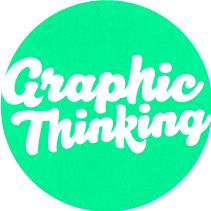
In the first part of this article I made an induction about what is a sample page, I explain the requirements to design it and why it’s essential in editorial design. Next, I will make a brief explanation of the elements that compose it and the advantages of designing it.
Elements that compose a sample page
Layout structure
The grid or layout structure, it’s the backbone of editorial design. It depends on the format and type of publication that we’re designing. With it we set the rhythm of reading and stiffness or graphic versatility. This structure is created with the sizes of the margins (top, bottom, outside and inside), the gutter (space between columns), the number of columns and if these are the same size or not. This relation between sizes and white spaces, allows creating a layout structure that can be more sober, classical, daring or dynamic, depending on the purpose of each publication.


Symmetrical structure. Design: Vivien Bertin (France)


Asymmetrical structure. Design: Kat Szewczyk (United Kingdom)
Typography
The typography is present in form of titles, subtitles, body text, folio, pull quotes, footers, captions, subparagraphs and other items that require the use of typefaces in the publication. It depends on the legibility of the content of the publication, which ends being its most important role.
Even graphic concept, artwork, photographs and other graphics resources you use are high quality, they may not fill the big hole left by an illegible font. If this doesn’t allow us to easily understand the contents or difficult the reading, and besides it isn’t aesthetically appropriate to the topic or readers profile, we’ve made a serious mistake as designers. The importance of typography goes beyond the symbolic meaning of each character to enable writing a message; its forms and behavior as text block is what the designer should study to make the text flow and enjoyable to read.
In addition, the chosen typeface must be sufficiently complete, so that has several variants that create different levels and pace. We know these variants as bold, semibold, medium, regular, light, thing, italic, narrow, condensed, etc. Evenly, containing special characters of the language in which we going to work.
We can also play with the contrast between two or three font families to make the most interesting and less monotonous design.

Typography which evokes a concept in contrast to a serif typeface.
Design: Michael Söderqvist-Waag (Norway)

Sans serif typography in text blocks. Design: Rostislav Dimitrov (Bulgaria)

Typography to emphasize the graphic concept of publication. Design: Zavial (United Kingdom)
Separating pages
Separating pages or separators are characterized by being formally different from the overall design of the publication. Depending on the type of content that is being designed, they can be composed of photographs, illustrations, only text or background color. As I said above, each publication defines the parameters to set these details in the design.

One-page separator. Design: Josip Kevala (Australia)

Double-page separator. Design: Oddds The New Anthropology (Singapore)

Double-page color separator. Design: Nakamuragraph (Japan)
Graphic resources
Graphic resources are all illustrations, graphics and photographs that are part of the content of the publication. Mainly these are created to expand the information set out in the text, but also can be used as purely aesthetic resource that contrasts with text blocks.
Depending on the concept and graphic proposal, graphic resources may have a specific aesthetic treatment, to make reference to a trend (like vintage style) or to send additional messages that refer to artistic movements or styles used at certain times (such as Pop Art, Art Deco).

Photographs to illustrate a subject. Design: Frédérique Gravier (Canada)

Explanatory statistics charts. Design: The Design Surgery (United Kingdom)

Illustration which evoques an aesthetic style. Design: Peter Dawson (United Kingdom)
Advantages of designing a sample page
When designing a sample page you can:
Thereby…
Editorial design is a complex process, however, doesn’t mean it should be traumatic or difficult. The must-have in editorial design allows us to become aware of the peculiarities of each project when we study their requirements, we understand the goals of the client and publication, and how this may be useful for the target audience. This way, we’ll be able to give a more accurate graphical response to each publication.



